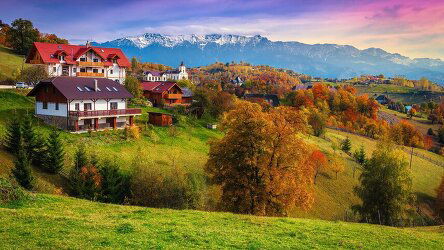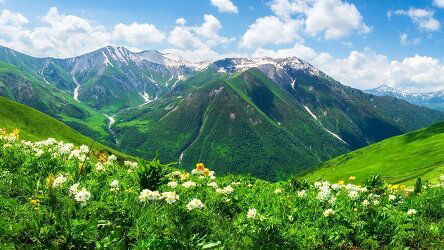Overview
Our immersive adventure takes you from the vibrant streets of Belgrade to the ancient cities of Shkodra and Prizren, through the dramatic landscapes of the Albanian Alps and the historic wonders of Sarajevo. Discover the complex histories and diverse cultures of these remarkable countries, from Montenegro’s fascinating past to the enchanting villages of North...read more Macedonia. From the vibrant city streets to the serene beauty of Lake Ohrid in North Macedonia, renowned for its crystal-clear waters and historic charm. Each destination reveals its own unique stories and traditions, offering a profound understanding of the region’s multifaceted heritage.
Itinerary
Welcome to Belgrade, Serbia! On arrival, you will be met by your driver and transferred to your hotel. The remainder of the day is yours to explore.
Outspoken, adventurous, proud and audacious: Belgrade (‘White City') is by no means a ‘pretty' capital, but its gritty exuberance makes it one of Europe's most happening cities. While it hurtles towards a brighter future, its chaotic past unfolds before your eyes: socialist blocks are squeezed between art nouveau masterpieces, and remnants of the Habsburg legacy contrast with Ottoman relics and socialist modernist monoliths.
This is where the Sava and Danube Rivers kiss, an old-world culture that at once evokes time-capsuled communist-era Yugoslavia and new-world, EU-contending cradle of cool. Stay: Saint Ten Hotel or similar
Set off after breakfast with your local guide to explore the capital and largest city of Serbia. This is the core and the oldest section of the urban area of Belgrade. For centuries, the city population was concentrated only within the walls of the fortress, and thus the history of the fortress, until most recent times, reflects the history of Belgrade itself!
This must-visit museum houses an invaluable collection of more than 200,000 artefacts representing the fascinating, tumultuous history of Yugoslavia. Photographs, artworks, historical documents, films, weapons, priceless treasure: it's all here. Enjoy some time at leisure.
Let us introduce you to a grandiose monument of nature, the mighty Danube river. The Danube was and still remains the point of both union and separation of nations and countries. Once the main bond between the East and the West, the border of the powerful Roman Empire hasn't lost its importance and nowadays is the route that still connects the edges of the Old Continent.
This incredible river popularly called the “old giant” is the cradle of many civilisations and cultures from different epochs and sites along the Serbian part of the bank are proving that. Return to your hotel. Stay: Saint Ten Hotel or similar (B/L)
Following breakfast in your hotels, transfer to Mokra Gora. Enjoy time at leisure to explore Mokra Gora (Drvengrad) which is a unique and charming village with traditional architecture made famous by the filmmaker Emir Kusturica for his film “Life is a Miracle.” Continue to Višegrad Bosnia.
Visit the historic bridge before enjoying free time to explore the Old Town which is a walled historical fantasy. The architecture is a medley of Byzantine, Ottoman and Renaissance styles, and there are images of Serbian heroes (Andrić, Tesla, Njegoš, Princip) liberally scattered around.
Transfer to Sarajevo. Stay: Aziza Hotel or similar (B)
Ringed by mountains, Sarajevo is a singular city with an enticing East-meets-West vibe all of its own. It was once renowned as a religious melting pot, earning it the epithet ‘the Jerusalem of Europe'. Within a few blocks you can still find large Catholic and Orthodox cathedrals, Ashkenazi and Sephardic synagogues, and numerous mosques. However, the Jewish population was decimated during WWII and Sarajevo is now a divided city, with most of the Orthodox Christians living in Istočno Sarajevo (East Sarajevo) on the Republika Srpska side.
Join your local guide as you explore the vibrant Bašcaršija, the city's historic bazaar, known for its intricate Ottoman architecture and bustling atmosphere. Visit the Gazi Husrev-bey Mosque, a masterpiece of Islamic architecture dating back to the 16th century. Discover the Sarajevo City Hall, an architectural gem showcasing Austro-Hungarian influences.
During the 1992–95 siege, when Sarajevo was surrounded by Bosnian Serb forces, the only link to the outside world was an 800m-long, 1m-wide, 1.6m-high tunnel between two houses on opposite sides of the airport runway. Walking through a 25m section is the moving culmination of a visit to the shell-pounded house which hid the western tunnel entrance. The story of the siege and the tunnel's construction is told via video, information boards and an audioguide accessible via free wi-fi.
Reopened in 2018 after being destroyed during the war, Sarajevo's cable car once again shuttles people on a nine-minute ride, climbing 500m to a viewpoint 1164m up on Mt Trebević. From here it's a short walk to the wreck of the Olympic bobsled track, seemingly held together by layers of graffiti. Enjoy some time at leisure for lunch.
This afternoon, regroup for a walking tour of Sarajevo. Explore the bustling Bascarsija, Sarajevo's historic Turkish market, where centuries-old traditions come to life in the winding alleyways and vibrant market stalls. Admire the impressive Gazi-Husrev-beg Mosque, an exquisite example of 16th century Ottoman architecture with great spiritual significance. Cross the famous Latin Bridge, also known as the Assassination Bridge, an Ottoman-era stone structure near the site of the fateful assassination of Archduke Franz Ferdinand in the 19th century. Stay: Aziza or similar (B/L)
This morning, you will transfer to Mostar. On arrival, visit the the Stari Most (Mostar Bridge), which stood for 427 years until its destruction in 1993 during the Croatian–Bosniak war. Stroll through the charming old Turkish bazaar, known as “Kujundziluk”,” where cobbled streets and lively stalls invite you to experience the city's vibrant atmosphere. Visit the “Koskin Mehmed Pasha” Mosque, a small architectural gem from the 17th century with striking views of the river & surrounding town. This is the most known and most monumental mosque in Mostar.
Enjoy time at leisure for lunch. Transfer to Budva with a few photo stops along the way. The remainder of your day is at leisure. Stay: Hotel Aleksandar or similar (B)
This morning you will transfer to Kotor, Montenegro's coastal treasure. Be lured by its stunning bay and well preserved medieval Old Town. Backed by a rugged mountain backdrop, explore the UNESCO-listed old town, climb the city walls for panoramic views, and take in the vibrant local culture. Kotor is a captivating blend of history and natural beauty, offering an unforgettable Adriatic experience.
One of the best preserved and most beautiful medieval fortified towns in the Mediterranean, it was built in honour of Saint Tryphon (Sveti Tripun), the patron and protector of the city, on the same site where an older church had already existed long ago.
Take a boat tour departing from Kotor stopping at nearby scenic locations such as Gospa, Perast or Tivat. Enjoy free time for lunch in Tivat before returning to Budva. Stay: Hotel Aleksandar or similar (B)
This morning you will transfer to Shkodër, Albania. Visit the Ebu Bekr Mosque, an important religious site known for its striking design and significance to the local Muslim community. Explore the Catholic and Franciscan Churches, which showcase the city's diverse religious heritage and architectural beauty. This ancient fortress, steeped in history, offers breathtaking views of Lake Shkodra, the city's rivers, and expansive mountain ranges.
Afterwards, head towards Shiroka for a boat tour on Shiroka Lake, where you can admire the view and enjoy the sunset. This tranquil experience is a wonderful way to end your day before returning to Shkodër. The afternoon is yours at leisure. Stay: Hotel Cocja Boutique or similar (B)
Transfer to Tirana, a city blending rich history with modern development. Centred around the bustling Skanderbeg Square, Tirana features a mix of Ottoman, Fascist, and Soviet-era architecture, alongside contemporary buildings and colourful street art from urban beautification efforts.
Visit the Skanderbeg Square, the vibrant heart of Tirana, named after Albania's national hero, Gjergj Kastrioti Skanderbeg, this expansive square is adorned with statues, fountains, and colourful flowerbeds.
Next, visit the historic Ethem Bey Mosque, a magnificent example of Ottoman architecture built in the late 18th century – it is one of the oldest mosques in the city and is named after its Founder, Et'hem Be, a prominent Albanian nobleman. Marvel at its elegant design which includes a graceful minaret and a beautifully adorned prayer hall with intricate frescoes and decorative motifs.
After breakfast, visit BunkArt1, a historical artistic centre housed in an anti-nuclear bunker inaugurated by dictator Enver Hoxha in June 1978. This underground complex, with its 106 rooms and congress hall, offers insight into Albania's communist past.
Following a break for lunch, transfer to Daiti National Park just outside the city. The Austrian built cable car is the longest in the Balkans and will whisk you away to Dajti Complex near the top of Dajti Mountain at about 1200 metres. Different activities, fresh air and unforgettable views await. The mountainside is covered in lovely, shady beech and pine forests and a number of walking trails wend up and down the mountain. Enjoy some free time to take in the view or stroll along the numerous trails. Stay: Lot Boutique Hotel or similar (B)
After breakfast, depart for Berat, known as Albania's “City of a Thousand Windows,” a historic town renowned for its well-preserved Ottoman-era architecture. Explore Berat's well-preserved Ottoman-era architecture. Walk across the ancient Gorica Bridge and through the charming Mangalem Quarter, admiring the city's distinctive, white-washed houses with large windows climbing up the hillside.
Visit Guesthouse Mishaxhiu Gardens to enjoy homemade raki, Turkish coffee, and traditional jams, embracing you with local hospitality. Lunch today is at Restaurant WilDor & Chef Toska, located near the Osumi River.
In the afternoon, continue your exploration with a visit to Berat Castle, a UNESCO World Heritage site. Explore its ancient walls, Byzantine churches, and Ottoman-era buildings. Ascend to the Gorica Viewpoint for breathtaking views of the city and the Osumi River below. Stay: Koroni Boutique Hotel and Restaurant or similar (B/L)
Depart this morning for Elbasan. Elbasan was founded in 1466 by the Ottoman sultan Mehmed II, on the site of ancient Scampis, as a base for his military operations against the Albanian commander Skanderbeg. The town was a principal centre of Albanian nationalism during Ottoman rule. Until World War II about 85 percent of the populace was Muslim and most of the remainder Albanian Orthodox. Architectural remains of the former walled town are visible. Enjoy a short visit of the Elbasan Centre, mosque and castle.
Transfer to Tushemisht where you have free time at leisure. A charming village nestled on the shores of Lake Ohrid in Albania, offers visitors a serene retreat with its picturesque landscapes and tranquil waters. Known for its warm hospitality and rich cultural heritage, Tushemisht provides a perfect blend of natural beauty and traditional charm.
Located on the stunning shores of Lake Ohrid in North Macedonia, offers an enchanting experience with its ancient monastery and serene natural surroundings. The site, renowned for its spiritual ambiance and historical significance, invites travellers to explore its beautiful frescoes and tranquil springs. Continue to Orhid where you have time at leisure.
With an atmospheric old quarter that cascades down steep streets, dotted with beautiful churches and topped by the bones of a medieval castle. Traditional restaurants and lakeside cafes liven up the cobblestone streets, which in high summer can be very lively indeed. Stay: Hotel Su or similar (B/L)
Following breakfast in your hotel, set off for a city tour. Exploring Samuel's Fortress in Ohrid offers a captivating journey through history, with its impressive medieval walls and stunning panoramic views of Lake Ohrid and the surrounding mountains. This iconic landmark, dating back to the 10th century, showcases the region's rich cultural heritage and strategic significance.
Ohrid's grandest church, 11th-century Sveta Sofija is supported by columns and decorated with elaborate, if very faded, Byzantine frescoes, though they are still well preserved and very vivid in the apse. Its superb acoustics mean it's often used for concerts. To one side of the church there's a peaceful, manicured garden providing a small oasis of green in the heart of the Old Town.
The Robevi House is a famous and historic building in Ohrid, North Macedonia. It was built in its current state in 1863–1864 by Todor Petkov from a village Gari near Debar. Today the house is a protected cultural monument and belongs to the Institute for Protection of Cultural Monuments and National Museum.
End your walking tour of the old town Ohrid, right at the feet of St. Kaneo. From here you can walk down to the shore, where you will take a boat ride for around 20 mins. Following the shoreline, take in the lovely villas and private beaches of Potpesh and Saraiste. You will also be able to take in a panoramic view of the Old Town from the water. Stay: Hotel Su or similar (B/L)
Following breakfast at your hotel, transfer to Struga. Enjoy some morning time at leisure to wander around the city at your own pace. Your next stop will be Tetovo before continuing on to Skopje, the capital city of North Macedonia. Discover a modern cityscape with grand statues, the iconic Alexander the Great Square together with the fountain, and the historic Stone Bridge. Explore the heart of the Balkans where history meets contemporary charm, offering a unique blend of old and new.
This extraordinary retro-futuristic memorial is the most unique church you'll see in North Macedonia. Inside the building there's a small 1st-floor museum displaying memorabilia relating to the famed Catholic nun of Calcutta, born in Skopje in 1910. On the 2nd floor there is a mind-boggling chapel, with glass walls wrought in filigree (North Macedonia's revered traditional craft). Silhouettes of doves are worked into the filigree to symbolise peace, as an homage to Mother Teresa.
The memorial sits on the site of a much earlier church, where Mother Teresa was baptised; a plaque around the corner commemorates the spot where she was brought into the world. Look out for the Mother Teresa quotations on plaques around the city centre as well.
Around the back of the memorial, take a peek at the 17th-/18th-century feudal tower that housed the nun's memorial before the ultra-contemporary version was built in 2009. The tower, with its stooped wooden balcony, is now crumbling and condemned but it still has city historians confounded: nobody knows why it was built, as this side of the Vardar River was thought to be uninhabited at the time of its construction. There are gun holes in the tower walls, so it's clear it was used for defence: somebody had something to protect, it's just not clear who or what.
The remainder of the afternoon is at leisure. Stay: Next Door Park Hotel or similar (B)
This morning you will transfer to Matka Canyon where you will join a boat trip into Matka Cave for approx. 1hr. Matka is a natural canyon, which as a geographical relief is really special, and the speleological park is one of the most fascinating ones in the world. The beautiful Matka canyon is only 15 km from Skopje. It covers 5,000 hectares of the beautiful Lake Matka, steep mountain slopes, exciting caves and picturesque medieval monasteries. Return to Skopje.
The Holocaust Memorial Centre is a moving museum with fascinating displays that commemorate the all-but-lost Sephardic Jewish culture of North Macedonia through a range of photos, English-language wall texts, maps and video. The exhibition documents the Jewish community's history in the Balkans, ending in WWII when some 98% of Macedonian Jews perished in the Holocaust. Afternoon at leisure. Stay: Next Door Park Hotel or similar (B/L)
Today is yours at leisure until it is time to transfer to the airport for your onward flight. (B)
Trip Inclusions
- Visit the historical Belgrade Fortress
- Walk through the Tunnel of Life – Sarajevo's only way to freedom during the war
- Explore Kotor's stunning bay and well preserved medieval Old Town
- Visit a historical artistic centre housed in an anti-nuclear bunker
- Embrace traditional village life and warm rural hospitality
- Delve into a complex and evolving history of the Ottoman, Fascist, and Soviet-eras
- Discover ancient castles from the Byzantine, Ottoman and Illyrian periods
- Enjoy a boat ride and gentle hiking at Matka canyon
- Transfers and transportation
- 13 nights' accommodation including breakfast daily
- Meals as per itinerary
- Entrance fees as per the itinerary
- Professional English-Speaking Guide Service
- All transfers, sightseeing and excursions by air-conditioned private vehicle
- International & domestic flights not mentioned above
- Visas
- Travel and medical insurance
- All services, and meals other than those indicated above
- Any changes to the proposed and confirmed program.
- All items of a personal nature e.g. drinks, laundry, telephone calls, tips etc
- Accommodation, itinerary and inclusions subject to change.
- Disruptions to itinerary may occur.
Availability
 USD
USD
Your Global Journeys Travel Advisor will check the availability of your departure date when you enquire. Additional savings may apply. We guarantee the lowest price in USA. T&C’s apply.
Tour & cruises prices are per person. Prices shown have savings applied, are subject to availability and may be withdrawn at any time without notice. Pricing and trip details are correct at this point in time, however are subject to confirmation at the time of booking and are subject to change by Crooked Compass. For cruise itineraries, cabin images are sourced from Crooked Compass. These should be treated as indicative only. Cabin inclusions, upholsteries and room layout may differ to the image(s) shown depending on the ship selected and your sailing dates.
Similar Tours

16 Days Bucharest Sofia
Operated By: Crooked Compass

12 Days Tbilisi Yerevan
Operated By: Crooked Compass







